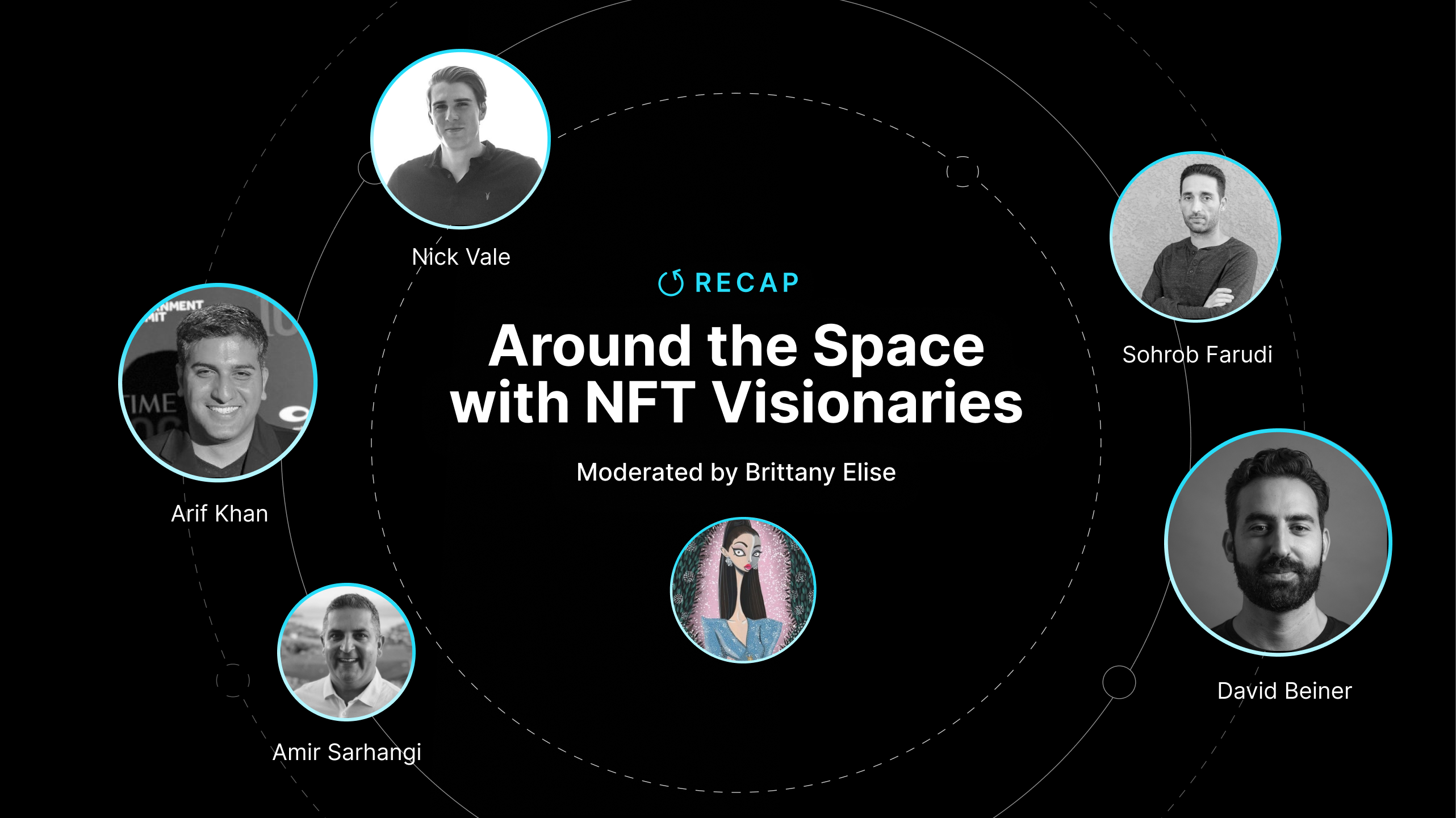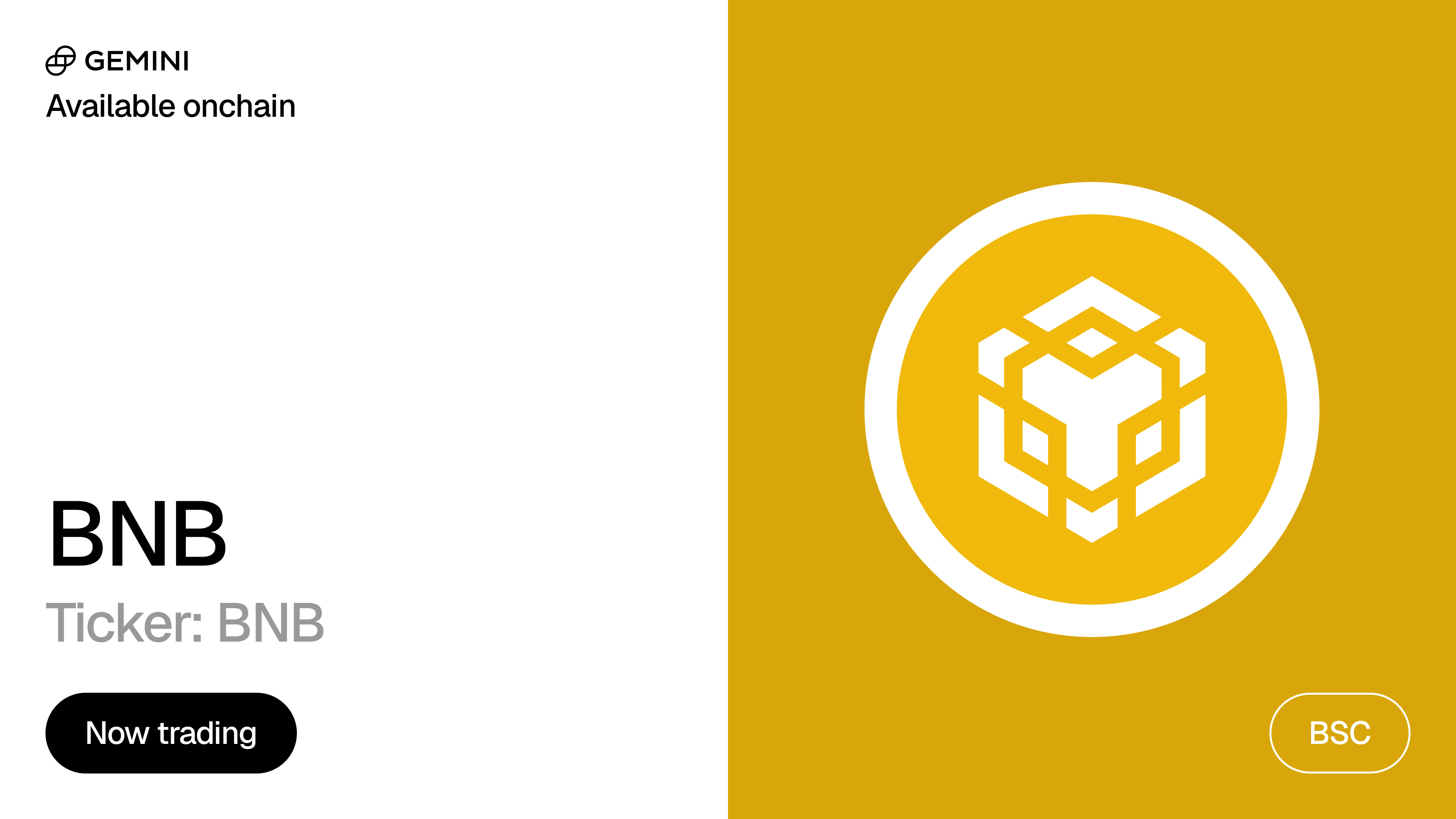NOV 08, 2022
Gemini Frontier Fund Roundtable: How NFTs Are Redefining the Intersection of the Digital and Physical Worlds

The rise of non-fungible tokens (NFTs) has spurred exponential growth in the number of projects harnessing this dynamic application of blockchain technology. Through the , we’ve invested in several teams that use NFT technology in various ways across their products.
Last month, we brought together five founders of GFF-funded projects to discuss how they use NFTs today and how they expect use cases to evolve. Here, we highlight some of the most interesting takeaways from that discussion.
Panelists included: Sohrob Farudi of , Amir Sarhangi of , Nick Vale from , David Beiner of , and Arif Khan of . For the full panel discussion check out the .
Where NFTs Started and Where They Are Going
Many panelists first entered the world of NFTs by breeding CryptoKitties and purchasing Wizards, among the first popular NFT projects that notoriously clogged up the Ethereum blockchain in 2017. While these early projects showed the ability to transfer unique value on-chain (a core benefit of NFTs), other innovations have since been applied to NFTs that create wholly new immersive experiences.
Arif Khan is the founder and CEO of Alethea AI which aims to create an intelligent Metaverse inhabited by interactive NFTs (iNFTs). He elaborated on this point:
“With NFTs, the value of an on-chain asset is certainly there. The moment you can transfer it, buy it, sell it, you can unlock a lot of value from that aspect alone, which is a very important revolution. Another revolution that's occurring right now … is being termed as a generative AI.”
We’ve started to “really see the power of the value that can come from combining AI and interactive characters. And when I started looking at NFTs as a static image, it was really just an insight that came from looking at what a static image is and how it can evolve over time.”
Redefining Online Communities
Community has become central to the NFT experience. From social clubs to artist fan groups, there is unlimited opportunity for building NFT-based communities.
Sohrob Farudi, co-founder and CEO of Fan Controlled Sports + Entertainment, spoke of his experience using NFTs to build an interactive sports entertainment platform:
“Community is really powerful [in sports], and so I think that's where we're gonna see really a lot of innovation come from — the players themselves — over the next couple of years as they want to get closer to the fans.”
“[Players] want to stay relevant. They want to build communities and their own personal brands and I think these different versions of NFT communities and experiences are going to allow them to do that and I think that's where fans are going.”
Disrupting Traditional Entertainment Models
As virtual worlds become more accessible and interactive, NFTs are beginning to play an important role in the development of the metaverse. Instead of waiting in long lines to see a favorite artist, shows may increasingly be held in virtual immersive environments, and eventually redefine the entertainment world.
David Beiner, founder and CEO of Hume, a web3 entertainment and music company, explained how the entertainment industry may be on the cusp of a dynamic revolution as NFTs and meta-experiences are integrated into traditional shows:
“I think there will be hologram concerts at some point in the future. But we've actually seen more success with concerts that have a giant screen and effects on the stage. We can really build a world within that screen so that you'll feel like you're watching a full on experience versus just seeing a hologram.”
Sohrob is working on integrating similar interactive experiences in sports, having built a real-life football league where NFT holders can call plays in real time.
“It's like playing a real life video game, a real life version of Madden where fans are choosing the play and then real players are running it on the field.”
Unlocking New Doors with Open Intellectual Property Rights
Intellectual property (IP) rights are central to the entertainment business. This has often come in the form of preventing the unauthorized third-party use of music, videos, likeness, and more.
Combining NFTs and the idea of open intellectual property can be a significant boon to NFT adoption in the coming years, David explained:
“Real communities are forming around these projects and the fact that you can buy an NFT and do whatever you want with the IP is just, it's a whole new way of getting those early adopters.”
As an example, Hume leverages the intellectual property of the Flufworld NFT collection. And, by purchasing a Fluf NFT, Hume created AngelBaby, a metastar complete with a team of artists writing music and tweaking its online identity and personality.
Increasing NFT Accessibility
Given the often prohibitive cost of blue chip NFTs, projects like Supermojo and reNFT have stepped in to provide new ways for collectors to access NFTs that fit their financial profiles.
Supermojo has borrowed from traditional retail practices with the creation of layaway for NFTs, allowing collectors to buy now and pay later. reNFT allows people to rent NFTs for a variety of use cases, including for use within play-to-earn games.
We are in the earliest stages of NFT innovation, and the discussion with these visionaries provided an encouraging glimpse of what we might expect in the years to come!
Onward and Upward!
Gemini Frontier Fund Team
RELATED ARTICLES

COMPANY
DEC 23, 2025
Gemini Predictions™ Launches New Sports and Politics Contracts

COMPANY
DEC 23, 2025
BNB Coin Is Now Available On Gemini

COMPANY
DEC 23, 2025